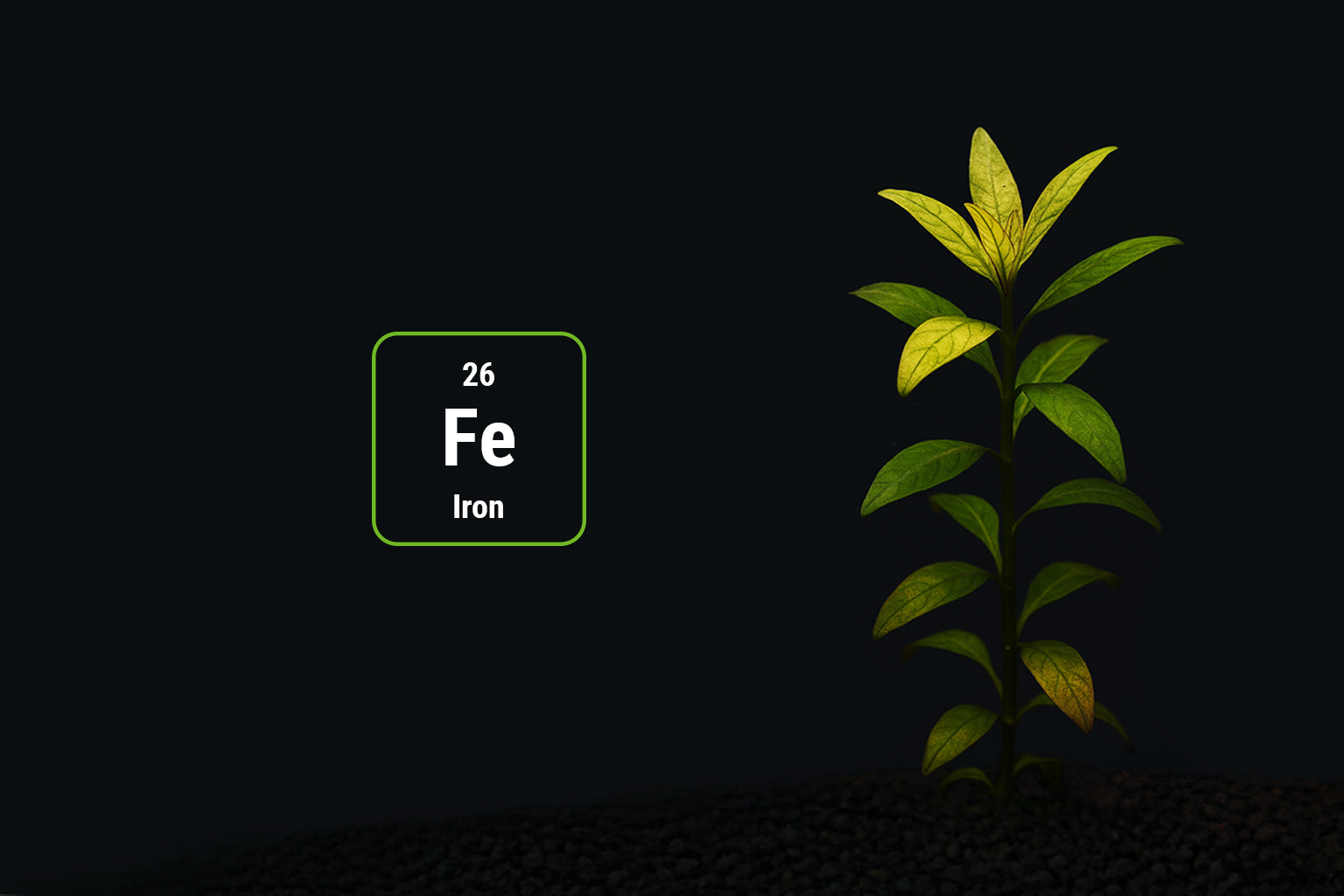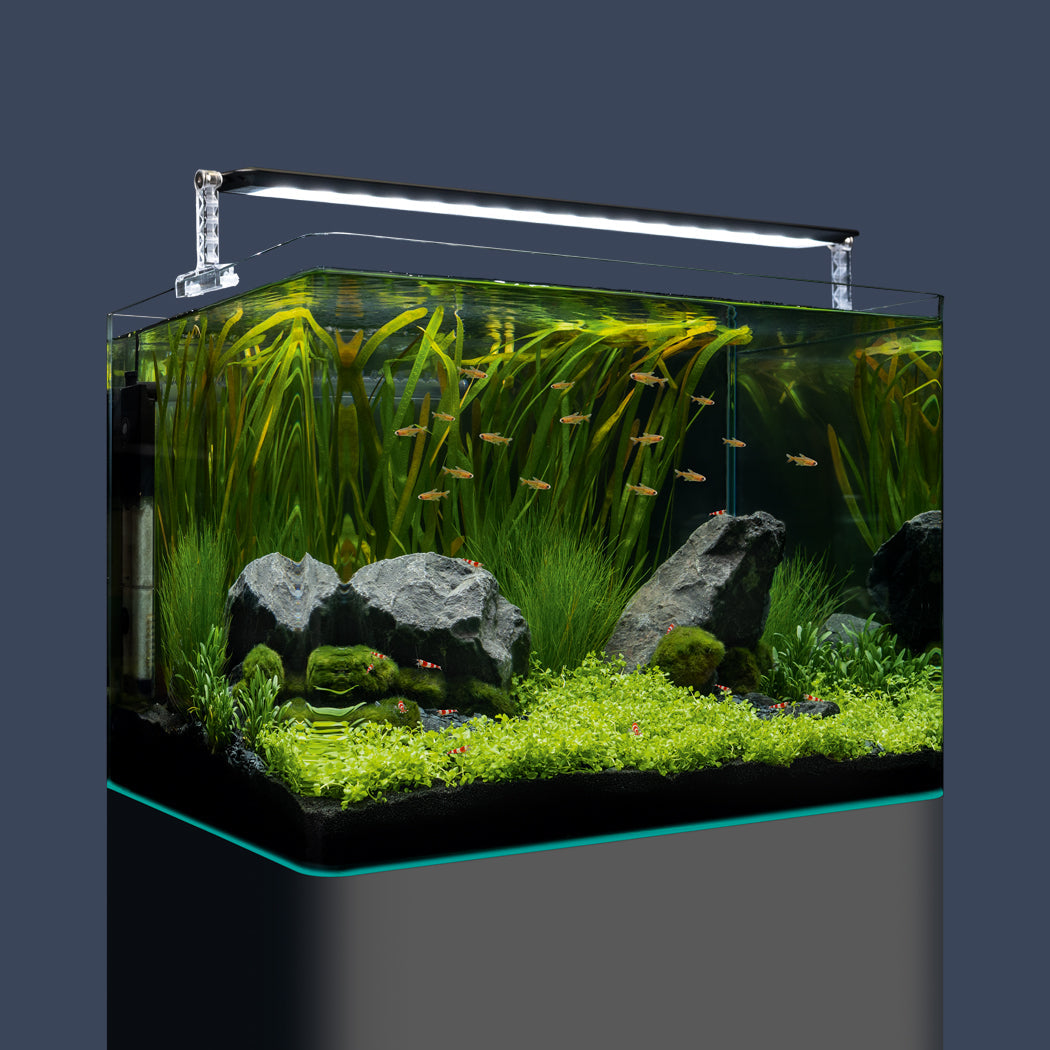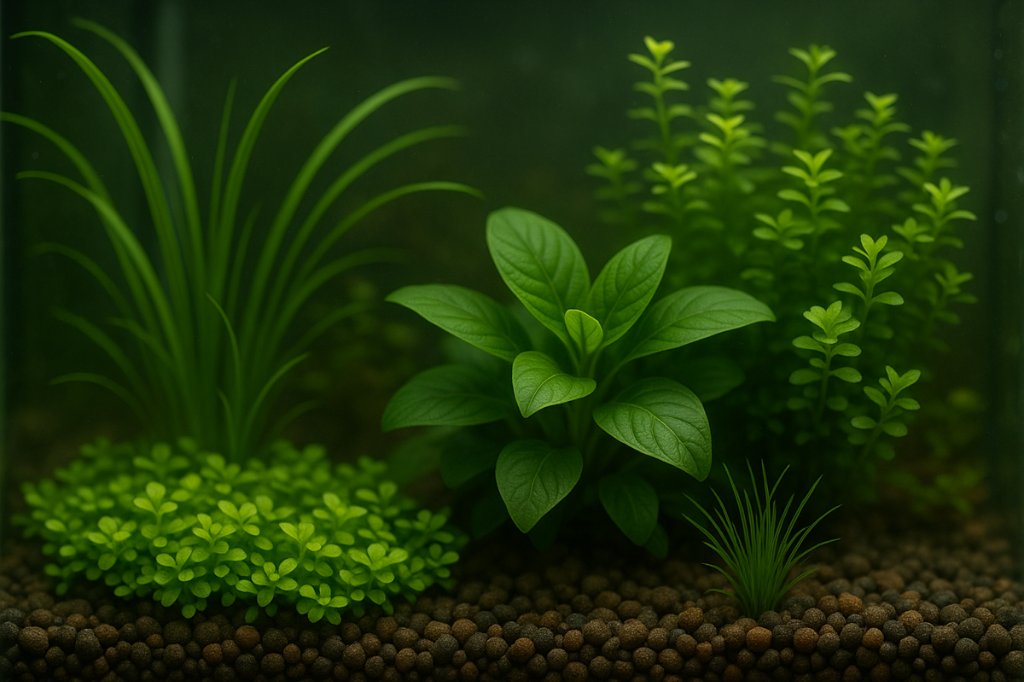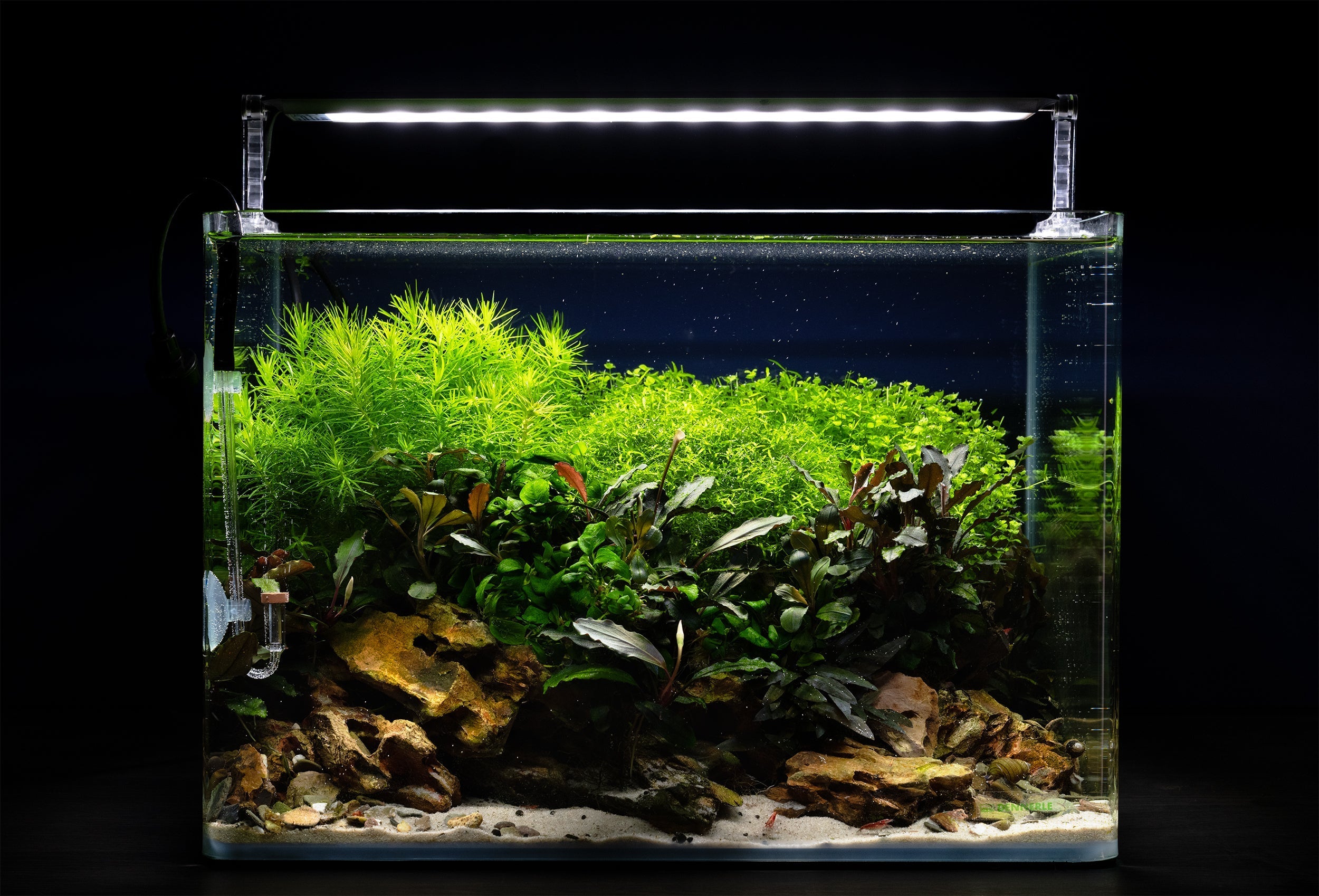What do plants actually need iron for?
For plants, iron is like the multi-tool in a toolbox – it's involved in many important processes. It plays a particularly important role in the formation of chlorophyll, the chlorophyll in leaves. Without iron, plants essentially function imperatively – no growth, no energy production. So, it's not a "nice to have," but a true must!
And what exactly does the chlorophyll do?
Chlorophyll—or, more elegantly, chlorophyll—is the star of photosynthesis. Plants use it to absorb sunlight and convert it, along with CO₂ and water, into sugar. Sugar serves as a key energy source and building material for the plant—it enables its growth and the formation of new leaves. Without chlorophyll, no photosynthesis takes place—and without photosynthesis, the plant cannot generate energy for growth.
How do I know if my aquarium plants are suffering from iron deficiency?
It's actually pretty easy to spot: The leaves turn yellow – especially the young shoots. In stem plants, you can see it at the tips of the shoots, in rosette plants, at the heart leaves. First, the tissue between the leaf veins turns yellow, while the veins remain green. Later, the entire leaf turns yellow or even glassy – until eventually, the entire tissue dies. So, if you see yellow leaves: iron deficiency alert!

Does iron deficiency have other consequences in the aquarium?
Oh yes, and they're really annoying! When plants grow poorly due to a lack of iron, another species takes full advantage: algae. Where plants are weak, algae attack. Suddenly, the algae population explodes – and you have to get the green soup in your tank under control again. In short: iron deficiency = algae party.
Also good to know:
Not all iron is equally beneficial for your plants. They can absorb primarily divalent iron (Fe²⁺) – this is the "usable" form, so to speak. Trivalent iron (Fe³⁺), on the other hand, is of little use to plants and remains unused in the water. The problem: Tap water generally contains very little iron, as it is filtered out during water treatment to prevent deposits in the pipes. The important nutrient manganese is also often lacking. In addition, iron is difficult to move within the plant. This means that once absorbed, iron remains in the respective leaf and is not transported to younger plant parts. Therefore, a regular and targeted supply of iron in the aquarium is particularly important – this is the only way to keep your plants healthy and strong in the long term.
If your plants turn yellow or algae suddenly appear in increased numbers, it's worth taking a look at the nutrient supply - often it's simply an iron deficiency.




Share:
Plant care – Part 5 – For a good plant growth
Das ultimative Aquascape: Erschaffe deine lebendige Unterwasser-Kunstlandschaft